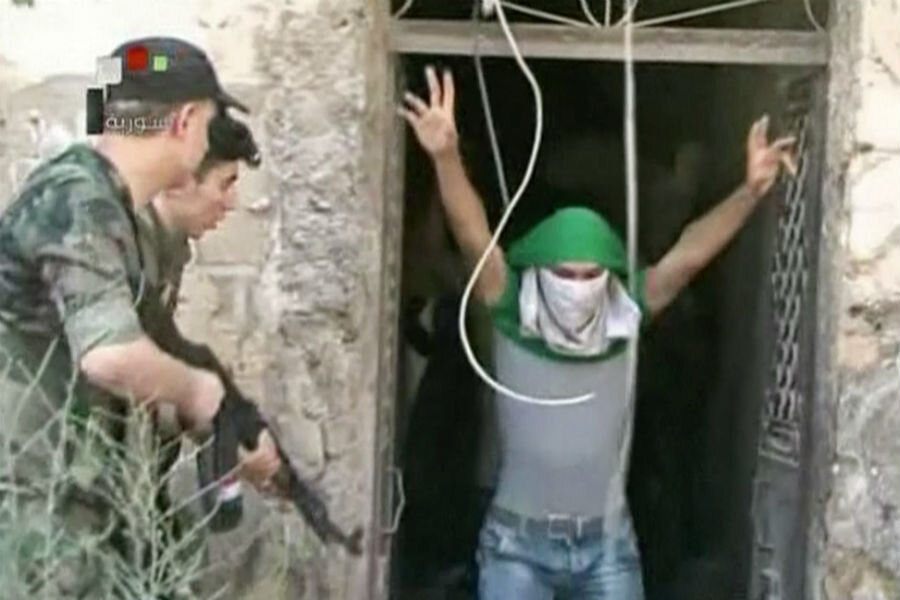What 'humanitarian corridors' in Aleppo mean for doctors in rebel Syria
Loading...
Dozens of families are trickling out of besieged rebel-held areas in eastern Aleppo by way of safe-passage roads opened by the Syrian government and supervised by Russia, according to Syrian state media.
State television showed images of what it described as civilians and about a dozen young opposition fighters who were surrendering to the government of Bashar al-Assad after it offered an amnesty to rebels who turned in their weapons over the next three months.
Some two weeks have elapsed since the Assad regime closed off all access to the main road, and the situation of hundreds of thousands of civilians living in rebel neighborhoods has grown increasingly precarious as food stockpiles dwindled. UN special envoy to Syria Staffan de Mistura said on Friday that the “clock is ticking” for residents there, estimating that essential supplies would run out within three weeks, reported France24.
The situation is especially dire for patients and medical staff in rebel hospitals. The regime has continued to target them with attacks. And as it bears down on eastern Aleppo, it has largely choked off access to supplies, says one member of an international relief group who agreed to speak to The Christian Science Monitor on background because of political sensitivities.
Russian deputy defense minister Anatoly Antonov said on Friday that the humanitarian corridors would allow people to enter Aleppo, not just to leave it, according to the Associated Press.
The corridors would seem to mark a turning point in aid delivery in Syria, where the government has for years denied access to international aid groups, swiped essential supplies from convoys and even attacked them. Assad’s government sees the provisioning of such supplies as “logistical backing to terrorists,” as the Syrian ambassador to the UN wrote in a 2014 letter. The Syrian government has routinely referred even to moderate rebels as “terrorists”.
But Jomana Qaddour of the Syrian Relief and Development (SRD) says that after speaking with medical affiliates on the ground on Saturday morning, doctors were still not being allowed free passage in and out of Aleppo, despite several hundred patients still in need of emergency care. About 20 doctors, who had traveled to areas outside Aleppo for a respite, were unable to return, she tells The Christian Science Monitor, and some 35 others were stuck inside eastern Aleppo.
“We don’t see [the corridors] as positive movement at all,” says Ms. Qaddour, in a phone interview. “What we are calling for is for the government to halt the bombardment of hospitals and civilian institutions.”
The UN is asking Russia to “leave the delivery of aid through corridors to the UN and its partners”, Mr. de Mistura said on Friday. And it is pushing for the implementation of a weekly 48-hour period during which aid could cross into besieged areas – a suggestion Ms. Qaddour says was too small of a window.
“These doctors need to be able to go in and out and switch places and access materials constantly,” she says.
The Syrian opposition largely dismisses the corridors as a war tactic, not an olive branch. "The regime wants to say that civilians have left in order to burn Aleppo,” opposition activist Baraa al-Halaby told The New York Times.
In a radio interview with the BBC earlier this week, Chicago orthopedic surgeon Dr. Samer Attar described “mass chaos” in Aleppo emergency rooms when sudden influxes of injured people arrived at the hospital where he was volunteering.
“We would have to wrap people who were dead in white shrouds and just pile them outside because we had no morgue and we had to make room for the incoming wounded,” he said.
And he added that was afraid that basic supplies could soon run out.
“They can’t get really powerful pain medications, most of what they have is Tylenol and Ibuprofen, just basic stuff…Now that there’s a siege, there’s really not much more they have left. I’m not sure how long they can last at this rate.”








